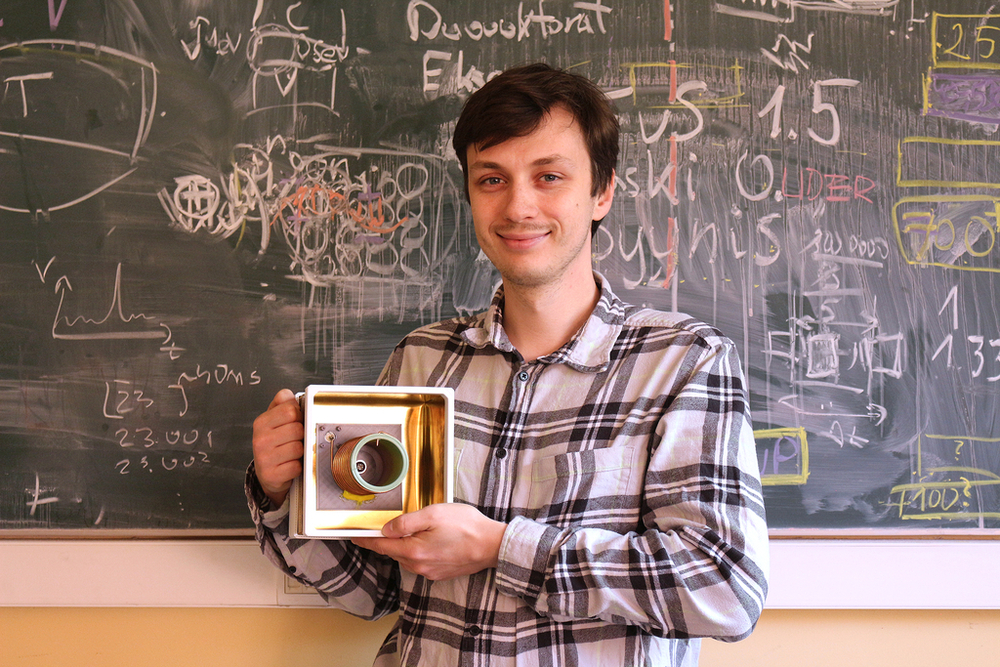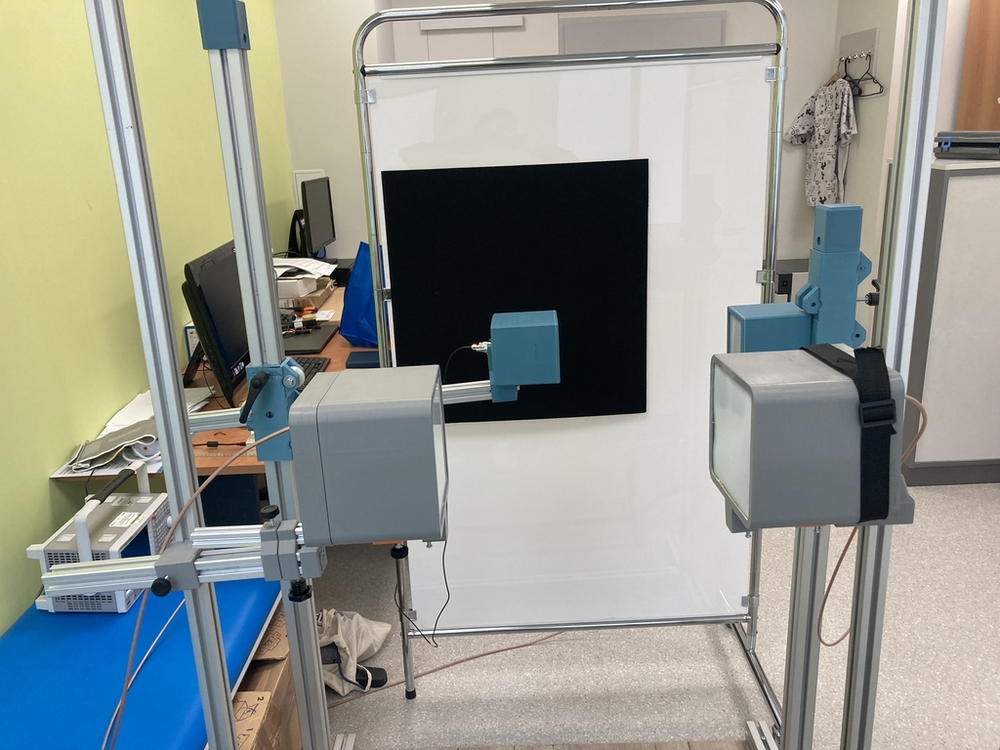 (Maciej Ślot with a sensor)
(Maciej Ślot with a sensor)
Fast and effective – a non-invasive diagnostic method
Fluid congestion in the lungs in patients with heart failure is usually the result of left ventricular heart failure. In this condition, the heart loses its ability to pump blood effectively to the rest of the body, which leads to an increase in pressure in the blood vessels of the lungs (pulmonary circulation). The increase in the pressure, in turn, causes fluid from the blood to penetrate into the intercellular spaces and alveoli in the lungs. Congestion is one of the most common causes of hospitalisation in patients with decompensated heart failure.
The team made up of: mgr inż. Maciej Ślot, Prof. Wielisław Olejniczak, Prof. Ilona Zasada (supervisor from the University of Lodz) and Prof. Agata Bielecka-Dąbrowa (supervisor from the Institute of Polish Mother's Health Center, Head of the Department of Cardiology and Congenital Defects in Adults), started working on the project, which resulted in an innovative device. Maciej Ślot has constructed a cardiac sensor that allows for quick and effective assessment of the amount of fluid in the lungs, which could be carried out not only in hospital conditions, but also in primary care units.
Unfortunately, currently there is no effective, non-invasive technique to control the amount of fluid in the alveoli. X-ray examinations are the most frequently used methods to assess the amount of potential congestion. However, diagnostics using these imaging methods is based on high-energy ionizing radiation, which cannot be used at excessive frequency
– explains Maciej Ślot from the University of Lodz Doctoral School of Exact and Natural Sciences.
Additionally, the currently methods require the involvement of radiology specialists and very expensive diagnostic equipment. Alternatively, bioimpedance, a method of measuring body conductivity, is also used to obtain information on patient hydration. However, all diagnostic techniques currently in use have their drawbacks, mainly related to the need for equipment that must be operated by specialised medical personnel and the results must be subjected to expert interpretation.

Our technique allows us to measure the electrical properties of objects by examining signal transmission and reflection from the material we are examining. During the examination, we ask a patient to stand between the transmitter and the radio receiver. Then, the device operator adjusts the height of the system to the patient's height. The next step is to transmit a short low-energy signal that passes through the patient's chest and after a while information about radiation absorption appears. This value increases in patients with heart failure as fluid appears in the lungs and may provide valuable diagnostic information for the physician treating the patient. The advantages of the solution include a quick measurement lasting a few seconds, the fact that it is a non-contact method, a very low-energy technique and safe for patients with pacemakers. The device has been submitted for a patent both in Poland and abroad
– adds the doctoral student.
Good job – successes of the scientists from the University of Lodz
Research conducted as part of the project "Badanie przenikalności dielektrycznej płynu przesiękowego" [Testing the dielectric permittivity of transudate fluid] (Incubator of Innovation 4.0 grant competition) at the Faculty of Physics and Applied Informatics at the University of Lodz has led to the design and construction of a prototype of a cardiac sensor operating based on microwave spectroscopy. The result of the work is a laboratory model, which is currently located at the Institute of the Polish Mother's Health Center, where experimental tests on patients with heart failure are carried out using it (over 150 patients have been examined so far) and a patent application "Układ sensorycznego czujnika kardiologicznego" [Cardiac sensory system].
Maciej Ślot talked about the research he conducts at the Faculty of Physics and Applied Informatics in one of the episodes of the TVP3 show – Łódzka Nauka Fizyka w medycynie i fantom.
You can find more about the science and achievements of our scientists on the university website.
Source, photos: mgr inż Maciej Ślot, the university of Lodz Faculty of Physics and Applied Informatics, the University of Lodz Doctoral School of Exact and Natural Sciences
Edit: Iwona Ptaszek-Zielińska, Press Office (Communications and PR Centre, University of Lodz)
